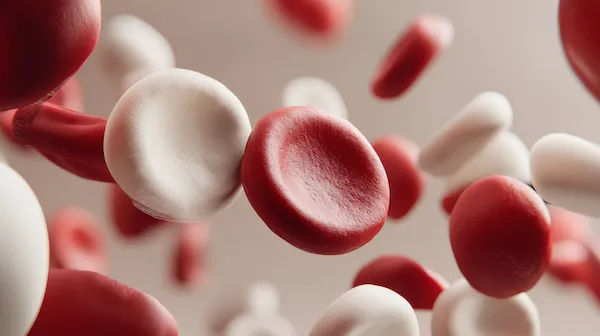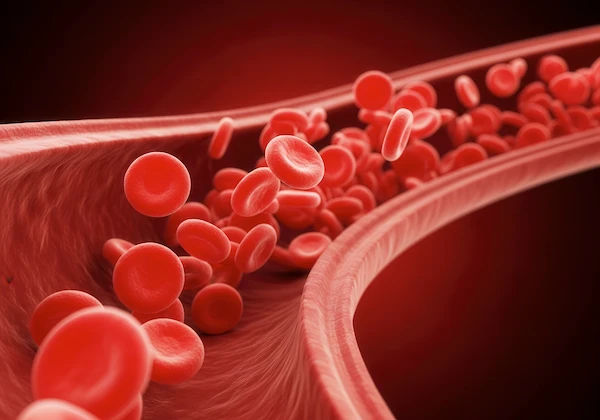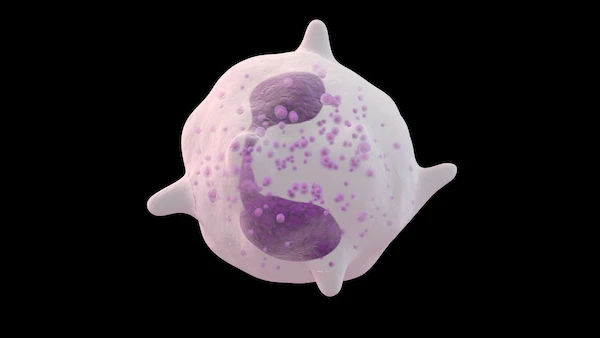Is Your Child’s Sudden Tiredness Linked to Blood Sugar? RBS Test Insights for Kids
If your child is unusually tired, fluctuating blood sugar could be a cause. Discover how an RBS (Random Blood Sugar) test can help identify issues and guide appropriate medical care.

Written by
Last updated on 6th Aug, 2025

As a parent, observing a sudden and unexplained change in your child’s energy levels can be concerning. One day, they are a whirlwind of activity, bouncing from one game to the next, and the next, they are lethargic, irritable, and struggling to concentrate. While many factors can contribute to fatigue in children, from a lack of sleep to the common cold, one often-overlooked culprit could be their blood sugar levels. This article delves into the crucial link between blood sugar and your child's energy, explaining the significance of an RBS (Random Blood Sugar) test and how it can provide valuable insights into their well-being.
The Dynamic Role of Blood Sugar in a Child's Body
Before we dive into the specifics of testing, it’s essential to understand what blood sugar is and why it's so vital, especially for growing children. Blood sugar, or glucose, is the body’s primary source of energy. It fuels everything from muscle movement to brain function. When your child eats, their digestive system breaks down carbohydrates into glucose, which then enters the bloodstream. The hormone insulin acts like a key, unlocking the cells to allow glucose to enter and be used for energy.
A healthy balance is key. If there is too much glucose in the blood (hyperglycaemia) or too little (hypoglycaemia), it can disrupt the body's normal functions and lead to noticeable symptoms.
The Connection: Tiredness, Mood Swings, and Blood Sugar
Have you noticed your child getting cranky or sluggish after eating a sugary snack? This is often a classic "sugar crash." When a child eats a lot of sugar, their blood sugar spikes quickly. Their body then releases a lot of insulin to bring the levels back down. This over-correction can sometimes lead to a sharp drop in blood sugar, resulting in symptoms like:
- Sudden Tiredness and Fatigue: The brain, which relies heavily on a steady supply of glucose, can't function optimally without it. This leads to a feeling of being 'drained' or 'run down.'
- Irritability and Mood Swings: Low blood sugar can affect a child’s emotional regulation, leading to frustration, anger, or sadness without an apparent reason.
- Difficulty Concentrating: A child may struggle to focus on homework or a conversation because their brain lacks the necessary fuel.
- Shakiness or Dizziness: In more severe cases, a child might feel unsteady or shaky, a direct result of their nervous system reacting to the lack of glucose.
The Random Blood Sugar (RBS) Test: A First-Line Diagnostic Tool
When a doctor suspects a connection between your child’s symptoms and their blood sugar, an RBS test is often one of the first diagnostic tools they will recommend. The test is exactly what it sounds like: a measurement of the glucose level in the blood at any given time, regardless of when your child last ate.
What Does the RBS Test Involve?
The RBS test is a quick and straightforward procedure. A healthcare professional will take a small sample of blood, usually from a vein in the arm or a finger prick. The sample is then analysed in a laboratory to determine the glucose concentration.
For a general understanding of what to expect, you can find more information about diagnostic tests on reliable healthcare platforms like Apollo 24|7. It is important to note that the results of a single RBS test are not always definitive and should be interpreted by a doctor alongside your child's symptoms and medical history.
Interpreting the Results: What Do the Numbers Mean?
The normal range for a random blood sugar test is typically below 140 mg/dL (7.8 mmol/L).
- Typical Result (below 140 mg/dL): This indicates that your child’s blood sugar is within a healthy range at the time of the test. However, if symptoms persist, your doctor may suggest further investigation.
- Result Between 140-199 mg/dL: This range is often considered a grey area and might indicate a condition called prediabetes, where blood sugar levels are higher than usual but not high enough to be classified as diabetes. This is a critical time for intervention through diet and lifestyle changes.
- Result of 200 mg/dL or higher: A random blood sugar reading of 200 mg/dL or higher is a strong indicator of diabetes, especially when accompanied by classic symptoms like increased thirst, frequent urination, and unexplained weight loss. In this case, your doctor will likely recommend additional tests to confirm the diagnosis.
It's crucial to remember that these are general guidelines, and your doctor is the best person to interpret your child’s specific results. They will consider all factors to provide an accurate diagnosis and a suitable treatment plan.
Beyond the Test: Taking a Holistic Approach
An RBS test is a powerful tool, but it's part of a larger puzzle. To get a complete picture of your child’s health, your doctor will also consider their lifestyle, diet, and stress levels.
- Diet and Nutrition: The types of food your child eats have a direct impact on their blood sugar. Encouraging a balanced diet rich in whole foods, lean proteins, and complex carbohydrates can help stabilise their energy levels. Limiting sugary drinks, sweets, and processed foods can prevent the dramatic spikes and crashes that lead to fatigue.
- Exam Stress: The pressure of exams can affect a child’s physical and mental health. Stress hormones can impact blood sugar levels. Making sure your child takes breaks, gets enough sleep, and eats well during exam time can help manage these effects.
- Physical Activity: Regular exercise improves the body’s sensitivity to insulin, helping cells use glucose more effectively. This not only boosts energy but also contributes to overall well-being.
- Sleep: A lack of sleep can disrupt hormone balance, including those that regulate blood sugar. Ensuring your child gets enough rest is fundamental to managing their energy levels and mood.
Conclusion
Understanding the link between your child’s blood sugar and their energy gives you the power to make good choices for their health. While a sudden lack of energy can be temporary, ongoing symptoms are a sign that something might be off. The RBS test for kids provides a straightforward way to check this link, serving as the first step towards diagnosis and effective management.
By combining the insights from a blood sugar test with a focus on a healthy diet, regular exercise, and stress management, you can help your child maintain stable energy levels, improve their concentration, and ensure they continue to thrive in all aspects of their life. Always consult a healthcare professional for a proper diagnosis and tailored advice regarding your child's health.





